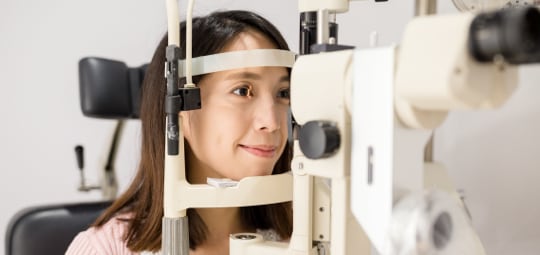Did you know that Glaucoma is one of the leading causes of blindness in Canada? This particular disease causes progressive degeneration of the optic nerve at the back of the eye, which over time, can eventually lead to gradual, irreversible vision loss. January was Glaucoma awareness month, and since this eye disease affects so many people it’s important to be educated and proactive.
Information about glaucoma is easy to obtain. In our blog today, we’ve put together some handy glaucoma facts. Don’t forget you can always reach out to us here at Yonge College Optometry for glaucoma screenings and any other questions you may have.
Glaucoma Awareness Month – Information About Glaucoma
According to the Glaucoma Research Society of Canada, more than 400 000 Canadians suffer from Glaucoma today. It is often called the “silent thief of sight” because progression happens very gradually, and often causes absolutely no pain and very few symptoms, if any at all. As such, keeping up on your yearly eye exams becomes very important in order to catch any possible changes that would require prompt treatment. Below are some facts about the disease.
Q: What causes Glaucoma?
A: The exact cause is unknown. This group of diseases is often associated with increased fluid pressure in the eye, however, damage can still happen when eye pressure is normal (a form of glaucoma referred to as normal tension glaucoma). Other theories point to poor blood perfusion or inadequate blood supply altogether.
Q: Who can get Glaucoma?
A: There are a few major factors when it comes to being at risk for glaucoma. Diabetics, individuals who have family members affected by the disease, and people over the age of 60 are just a few people at higher risk. Certain ethnicities – such as African, Asian or hispanic descent are also at higher risk for glaucoma. Additionally, damage or injury to the eye may also open up risks to developing the disease at any stage in life.
Q: How is Glaucoma diagnosed?
A: Your optometrist will do a thorough eye exam, which includes measuring the ocular pressure, as well as examining your optic nerves.
Q: How is Glaucoma treated?
A: Glaucoma is treated with either medications and/or surgery. A number of medications are available that work to decrease elevated intraocular pressure. Patients will often take more than one medication to keep their eye pressure at an optimal level. Additionally, there are a few different surgeries that also aim to decrease intraocular pressure. These surgeries do not restore vision loss, but instead attempt to prevent further damage by keeping intraocular pressure low.
Q: If I have loss of vision due to Glaucoma, will I ever get it back?
A: Unfortunately, no. Once vision is lost due to Glaucoma, it cannot be restored. This is one of the most important reasons we recommend having your eyes checked regularly. Early stages of glaucoma are most often completely painless and don’t cause any visual symptoms. It’s important even for those individuals with 20/20 vision, to have routine eye exams.
Glaucoma awareness month is a perfect opportunity to remind all individuals that Glaucoma can affect anyone! Yearly eye exams are just as important as regular check ups with your family doctor. We hope this information about Glaucoma is helpful in preventing unnecessary progression of the disease in anyone! For more questions call us on (647) 748-3937 or click here to request an appointment online.
























